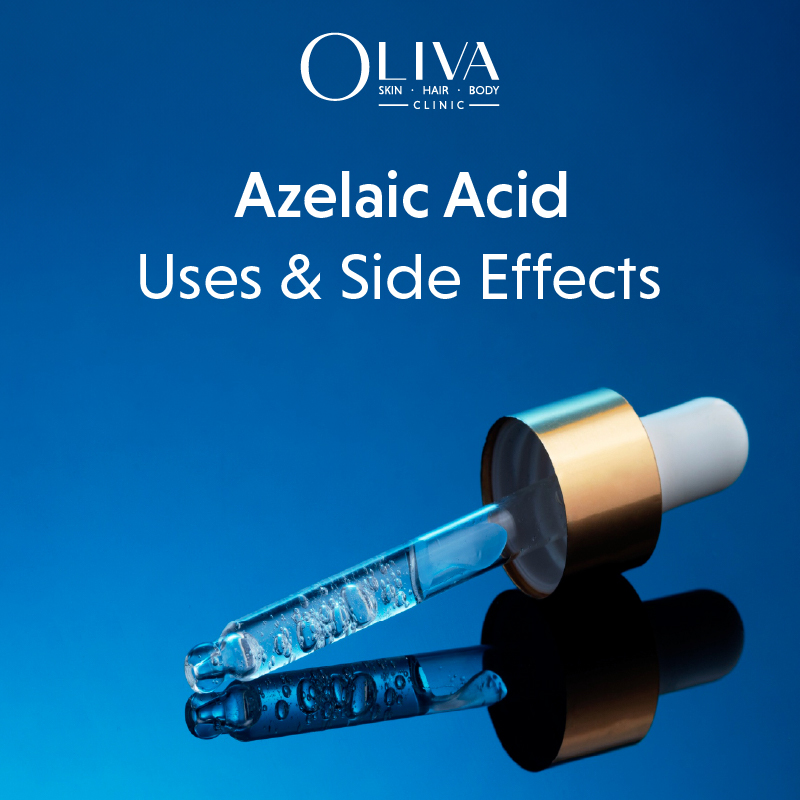In This Article
How To Remove Moles On Face Permanently?
Moles are a very common occurrence on the body. Although, some people consider them as beauty spots and associate them with luck, but some of these occurrences can be unsightly. There are several medical treatments that help in removing moles from face and other areas of your body, with no pain and minimal scars, such as radiofrequency, laser, punch excision, shaving, etc. But, it is important to get your mole inspected by an expert dermatologist before you get them treated.
In This Article

What Is A Mole?
Moles are clustered melanocytes that clump together. Melanocytes produce melanin and thus are responsible for the natural pigmentation of the skin. A mole is a small/large, round (usually), and dark-pigmented spot on the skin, which typically is of red, brown, pink, or black colour. A mole can be present anywhere on the body and is scientifically called nevus. Mostly, moles appear during early childhood, but, in some cases, they can occur even in adults.
Also Read: Mole Removal Treatment Procedure
What Causes Moles On The Face?
Moles are caused due to excess sun exposure or can also be taken to be a sign of ageing. But, an abundance of moles on the skin may be because of a skin condition called dysplastic nevi, which is because of a genetic disposition and can be an indication of skin cancer as well. Thus, it is important to seek immediate medical help as soon as you notice a mole that abnormally appears on your body. Moles tend to darken because of excessive exposure to sun, or during hormonal changes while teenage years, during pregnancy, or with ageing.
There are mainly four types of moles:
- Common moles
- Atypical moles (melanoma)
- Congenital moles
- Acquired moles
Some moles have a tendency of developing into cancerous cells. If you have more than fifty moles on your body, then you should probably have yourself checked.
Also Read: What Is Melanocytic Nevus?
Symptoms Of Moles
Identifying a mole is simple, and it is of different size, shape, colour, and texture. Some of the symptoms include
- Colour and texture Moles are typically brown coloured, but, they can also be tan, black, pink, red, or blue as well. The texture of a mole is usually wrinkled, raised, or flat, and may have hair growing from them.
- Shape In most cases, the shape of a mole is oval or round.
- Size Usually the size of a mole is about ¼ inch, which is as big a size as that of a pencil eraser. But, in some cases, it can be bigger than that and can cover wide areas of torso, limb, or face.
Moles appear anywhere on the body armpits, scalp, fingers, or toes. And, practically, everyone has about 10 to 40 moles on their body by the time they turn 50. Occasionally, moles either fade away with time or tend to become darker and larger because of hormonal changes.
Also Read: What Are Flat Moles?
Types Of Moles On Your Body
The different types of moles are:
- Acquired Nevi: These are the type of moles that appear during early childhood or during adulthood stage. These moles are non-cancerous and rarely have the potential to develop into malignant melanoma
- Junctional Melanocytic Nevi: These moles are typically flat and look similar to a freckle. They are uniformly coloured and are usually brown, black, or dark brown. These types of moles are often called junctional nevi because the melanocytes that cause the mole are located at the epidermis and dermis junction. Appearances of junctional melanocytic nevi are usually on the face, trunk, arms, legs, genitals, or soles. As you get into adulthood, you would observe that these moles either diminish or disappear with time.
- Intradermal Nevi: These moles are of light brown colour and are typically dome shaped. They also go by the name dermal nevi and are located in the dermis. Due to the mass of the melanocytes, the mole appears to be a flesh coloured bump on the surface of the skin. Intradermal Nevi is usually observed in adults.
- Compound Nevi: Compound nevi is known to have both the features of junctional and intradermal nevi. The location of melanocytes lie both in the dermis and dermo-epidermal junction, and thus they usually appear as a raised mole that is uniformly pigmented.
- Freckles: Freckles are typically caused due to excessive exposure to the sun’s radiation. These appear to be small flat spots on the skin and are commonly known as ephelides. Freckles tend to darken or diminish based on the level of exposure to the sun
- Lentigines: These are also known as age spots, liver spots, or sunspots. They are flat and brown in appearance and are commonly associated with excessive exposure to the sun. Unlike freckles, these are permanent spots that don’t fade away, despite limiting exposure to the sun. They are a very common sign of ageing and mostly appear in people over 40, on the face, chest, shoulder, back, arms, and hands.
- Seborrheic Keratoses: These are formed due to raised benign growth of pigmented keratinocytes on the epidermal layer of the skin. They often look similar to warts or melanoma and are typically of tan to dark brown colour. These moles are waxy in texture and thus are often even called “brown candle wax on the skin”. The body parts that are not affected by these moles are areas around mouth or eyes or on the palms or soles. Mostly harmless, but should be checked by an expert, as they can develop into melanoma.
Also Read: What Causes Nevus Depigmentosus?
Can I Remove My Mole At Home?
Removal of a mole at home may sound convenient but can often be hazardous. Mole removal creams that are available over the counter, thick scars as a side effect of removing the mole from that part of the body. Sometimes, people cut moles off with scissors or razors, and this increases the chances of the mole getting permanently scarred or turning infectious, especially if the equipment that is being used to cut the mole off, is not sterilized. Further, it is difficult to examine a cancerous mole at home, and if not inspected by an expert dermatologist during the early stages, can develop into a serious condition that could be life-threatening. Thus, it is important to let a dermatologist thoroughly analyze a mole and prescribe an appropriate treatment accordingly.
Also Read: Becker’s Nevus Laser Treatment?
How To Remove Moles From Face Permanently?
To remove a mole permanently you can either go for a surgical or a non-surgical treatment, based on the size, depth, and type of mole, as it can be compound nevi, intradermal, or junctional mole. In some cases, irrespective of the type of treatment, removal of a mole can lead to mild scarring, which can further be minimized by laser resurfacing.
Most Effective Facial Mole Removal Treatments
You can cosmetically treat moles by using several safe and painless procedures. It is important to remove moles, as they can be potentially cancerous apart from standing out on the skin. Radiofrequency, punch excision, electrocautery, and Q switched YAG lasers are some the popular treatments, which help in permanently removing moles, and, sometimes, a combination of these treatments are used for mole removal
-
Q switched YAG laser:
Laser mole removal is the most convenient of all treatments and it termed as the best way to remove a mole, which is why it is the most popular amongst the dermatologists and people alike. It is a cost-effective method and causes no scarring. Based on the size, type, and colour, the number of sessions required varies. The procedure involves applying local anaesthesia before and using a burst of the beam such that the light energy breaks down the mole cells, so it dissolves and dissipates. Laser removal can be used on moles that are difficult to reach. A typical two or three sessions are required to fully remove a mole.
-
Radiofrequency:
In this treatment, radio waves are used to remove a mole by using a fine loop of platinum wire. This wire is as thin as a hair strand and is used to brush the mole and vaporize it. Typically, a wound is formed after this treatment. This is of the same size as the mole, and eventually forms a scab that subsequently fades away after a week and a fresh layer of skin takes its place. You would observe exceptional results with minimal to no scarring and zero downtime. You can remove a mole using Radiofrequency in just one sitting. With fast healing and being suitable for all skin types and all age groups, this procedure is one of the popular mole removal treatment.
-
Punch Excision:
This treatment is commonly used to treat smaller moles and is also called punch biopsy. It uses a device to punch the mole out. Punch excision involves using a device to skillfully and carefully extract a cylindrically shaped piece of skin.
-
Electrocautery:
Electrocautery is mostly used for removal of skin tags or seborrheia keritosis. The process involves burning the mole off superficially, so as to ensure the surrounding tissues are safe, thereby avoiding scarring. This process needs multiple sessions, and typically 1-3 sessions are prescribed for mole removal.
Laser vs Radiofrequency Treatment For Moles Removal
Radiosurgery uses radio waves with high frequency to cut tissues, and, it cuts and coagulates tissues simultaneously. Whereas, in laser surgery, bursts of light energy are targeted for mole removal.
Advantages of Laser Mole removal are
- Minimally invasive
- No downtime and non-surgical
- Target moles anywhere in the body with precision
- Highly effective with minimal damage to surrounding tissues
- No scarring
Advantages of radiofrequency moles removal are
- Minimal scarring
- No damage to the surrounding tissues of the treated area
- No bleeding
- Zero pain after application of anaesthesia
- Areas which can be treated face, arms, armpits/ neck/ chest
Also Read: All You Need To Know About Radiofrequency
Frequently Asked Questions On How To Remove Moles On Face
Yes, there are several ways to remove moles, but, it is important to examine the mole before removing it, as there are chances of it being cancerous or melanoma.
Although, mole removal is a safe procedure, but if not done properly under sterile conditions, it can result in infection, or can lead to rare nerve damage.
Laser mole removal is not painful as a local anesthesia is applied before the procedure is implemented.
If laser treatment is used to remove scars, then it takes about 2 weeks after treatment. But, there should be a difference of 2-3 weeks between sessions.
Typically, most treatments, like laser or Radiofrequency, have minimal scarring. And these scars can be tackled by laser resurfacing.
In some cases, if the mole is shaved off, then it can grow back, though it is a pretty unpredictable instance. Also, if a mole has hair growing from it, though that mole doesn’t come back, but the hair often grows back.
Read This Next

Salicylic Acid vs Lactic Acid: Differences, Benefits, and Uses for Skin

Pre Bridal Packages for Brides-to-Be: Skin, Hair & Body Treatments

Home Remedies for Dark Underarms: Natural Ways to Lighten Dark Armpits

Azelaic Acid For Skin: Uses, Benefits & Side Effects

Step-By-Step Korean Skincare Routine To Achieve Glass Skin



